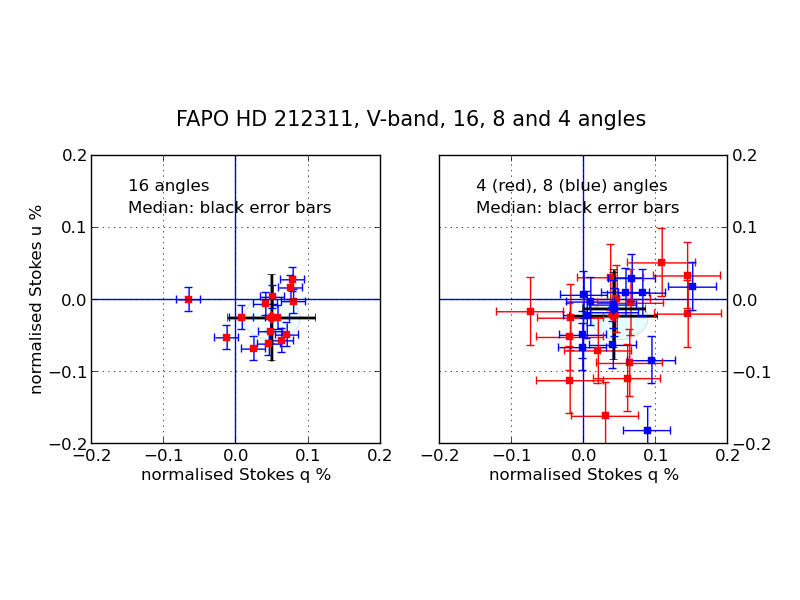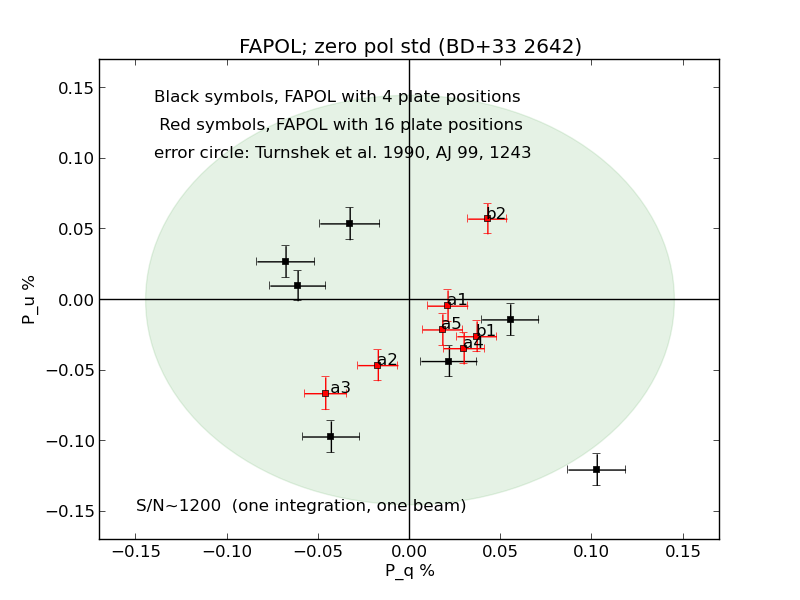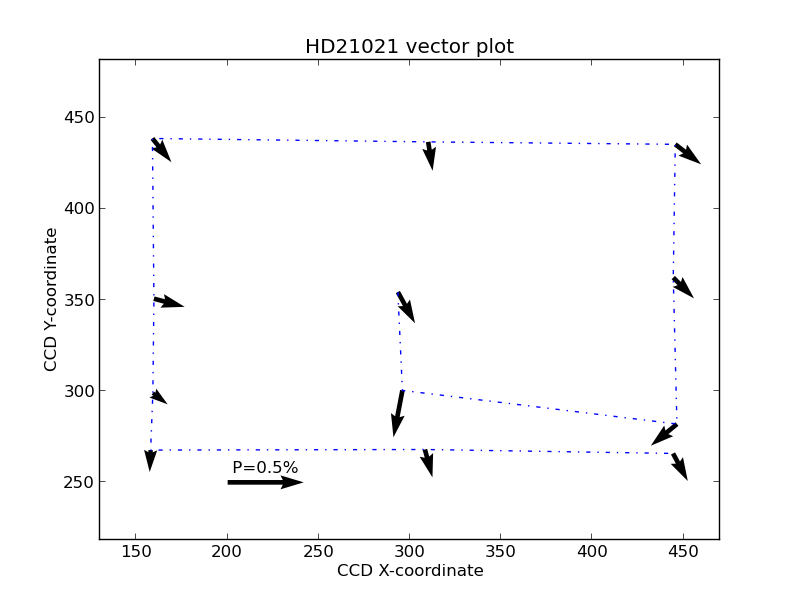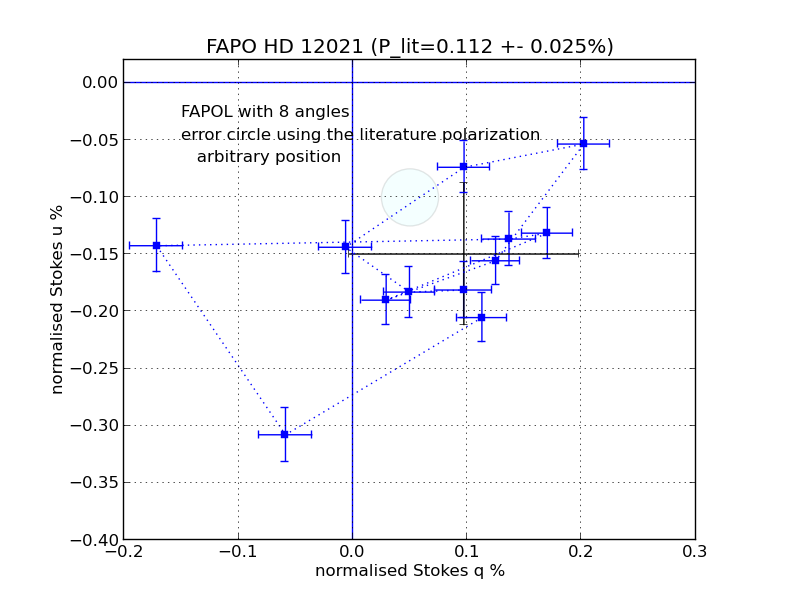
Standard star observations using FAPOLAccuracy of the measurementTo determine the real accuracy of FAPOL zero polarization standards have been observed repeatedly several times during the night. The data were reduced using standard iraf-procedures (trim, bias correction and flat field correction using "imaging" twilight flat). The HD212311 was observed fourteen times and BD+33 2642 seven with high signal-to-noise ratio and rotating the retarder full circle. The BD+33 2642 data were aimed to study effect of a "dust cloud" on measured polarization. The normalised Stokes parameters were calculated from the iraf/apphot fluxes. The 16 positions means observations with retarder plate at 0,22.5,...,337.5 degrees, 8 positions 0,22.5,...,157.5 degrees and 4 0,22.5,45, 67.5 degrees.The table below summarizes the results.
where N is the number of retarder plate positions and SNR signal to noise ratio.
Full plots: HD212311 and BD+33 2642 .
The position of the target on calciteThe measured degree of polarization has no/little dependence on the position of the star on the calcite. Zero polarization standard HD12021 was observed at different positions on
the calcite in order to check the position dependence. Similar results were found when the "dirty calcite" was studied. The retarder plateWe found no evidence that the retarder plate would have preferred orientation for the zero polarization standard stars. The "dirty calcite" 16 angles data was split four 4 angles sets. Then the four "4 angle subset" px and py were compared to the 16 angle value.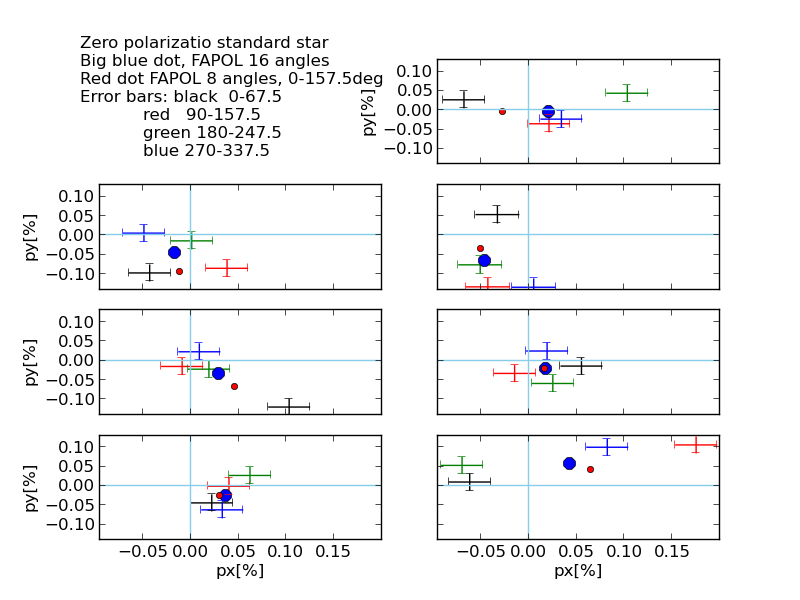
The plot shows the seven measurements of the star BD+33 2642. The big blue circle indicates the 16 angles px,py, the red circle the 8 angles (0-157.7degrees) and the error bars 0-67.5, 90-157.5, 180-247.5 and 270-337.5 with black, red, green and blue, respectively. |
||||||||||||||||||||||||||||||||||||||||||||||||||||||||||||||||||||||||||
| ||||||||||||||||||||||||||||||||||||||||||||||||||||||||||||||||||||||||||
